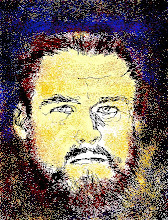Do all living things have some sense of time? Do Sequoias know they are thousands of years old
or do only animals with brains have some sense of time like a human or a dog? The physical
construction of a dog's brain must be what gives it a different sense of time than us. Dogs seem
to grasp the fourth dimension so much more clearly.
Wednesday, October 27, 2010
Friday, October 15, 2010
The Ancestor's Tale by Richard Dawkins is an exciting journey backward through time
that introduces the reader to a series of "concestors" or ancestors that we share a biological
affinity with throughout evolution. Dawkins fills each animal's tale with enlightening
references to biology like how Chimpanzees lack the Fox P 2 gene in their deoxyribonucleic
acid which humans have and might be what enables us to develop spoken language and that beavers are responsible for the largest extended phenotype known to man; lakes caused by dammed up rivers. He also discusses the asexual reproduction of Bdelloid Rotifers.
I found it interesting how Dawkins mentions both primitive sharks such as Charocles Megalodon and then Anomolocaris but he doesn't suggest that Anomolocaris might have been a shark ancestor as Stephen Jay Gould suggested in his book Wonderful Life. I could only pretend to take an interest in the smallest aquatic lifeforms like sea squirts who were our oldest concestors that Dawkins goes into a lot of detail about toward the end of the book. The Ancestor's Tale is modeled after Geofferey Chaucer's Canterbury Tales so each animal he focuses on has its own individual tale in the journey. One of my favorite chapters was the Orangutan's tale wherein he describes brachiation which is an Orangutan's customary use of its arms for ambulation rather than its legs.
that introduces the reader to a series of "concestors" or ancestors that we share a biological
affinity with throughout evolution. Dawkins fills each animal's tale with enlightening
references to biology like how Chimpanzees lack the Fox P 2 gene in their deoxyribonucleic
acid which humans have and might be what enables us to develop spoken language and that beavers are responsible for the largest extended phenotype known to man; lakes caused by dammed up rivers. He also discusses the asexual reproduction of Bdelloid Rotifers.
I found it interesting how Dawkins mentions both primitive sharks such as Charocles Megalodon and then Anomolocaris but he doesn't suggest that Anomolocaris might have been a shark ancestor as Stephen Jay Gould suggested in his book Wonderful Life. I could only pretend to take an interest in the smallest aquatic lifeforms like sea squirts who were our oldest concestors that Dawkins goes into a lot of detail about toward the end of the book. The Ancestor's Tale is modeled after Geofferey Chaucer's Canterbury Tales so each animal he focuses on has its own individual tale in the journey. One of my favorite chapters was the Orangutan's tale wherein he describes brachiation which is an Orangutan's customary use of its arms for ambulation rather than its legs.
Subscribe to:
Comments (Atom)
